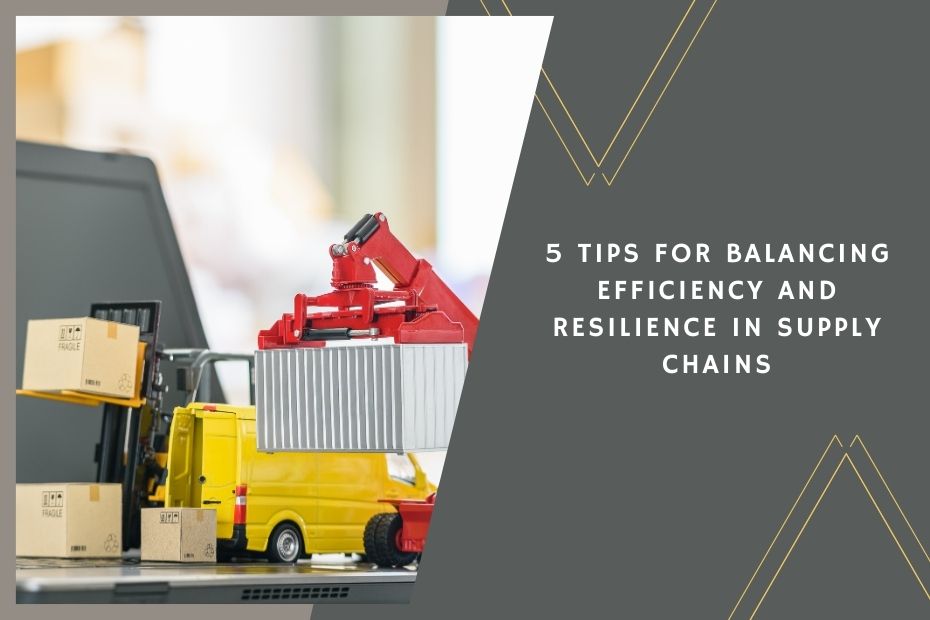Supply chain management is always a delicate balancing act between keeping operations efficient and ensuring the system can handle disruptions. In today’s global marketplace, these two goals can seem contradictory, but I’ve found that with the right strategies, it’s entirely possible to maintain both. Efficiency focuses on minimizing costs and maximizing productivity, while resilience ensures that your supply chain can withstand unexpected challenges like shortages, delays, or political instability. From my experience working with supply chain professionals, it’s clear that building resilience doesn’t have to come at the expense of efficiency. Here are five ways I’ve seen that can help strike that balance.
1. Diversify Your Supplier Base
In my view, one of the most crucial strategies to balance efficiency and resilience is to diversify your supplier network. Over-reliance on a single supplier can leave your supply chain vulnerable to disruptions. If something happens to that supplier—whether it’s due to a natural disaster, political unrest, or something as mundane as a production delay—your entire operation could grind to a halt. Diversification is a safety net that ensures continuity even when disruptions occur.
However, I also understand that diversification can add complexity and potentially increase costs. This is why it’s important to find the right balance. Dual or multi-sourcing strategies, where companies have additional suppliers ready to step in during a crisis, are becoming more common. These backup suppliers might not always be used, but they’re an essential part of building a resilient supply chain. From my experience, the cost of engaging multiple suppliers is often outweighed by the benefit of avoiding potential downtime.
2. Leverage Technology for Greater Supply Chain Visibility
One of the most significant advances in supply chain management has been the integration of digital tools to enhance visibility. I’ve seen firsthand how real-time tracking technologies, like IoT and AI, can transform supply chains. These tools allow businesses to monitor every stage of the supply chain, giving insight into potential delays, shortages, or inefficiencies long before they become full-blown problems.
For me, using predictive analytics powered by AI is a game-changer. These tools can forecast potential disruptions, whether due to weather, geopolitical shifts, or market demand fluctuations, allowing companies to make proactive decisions. In one instance, I worked with a company that integrated these technologies, and they saw immediate improvements in both efficiency and resilience. By predicting supply chain bottlenecks, they could reroute shipments, change inventory orders, and communicate with suppliers well ahead of time. This kind of visibility doesn’t just protect against disruptions—it also leads to better decision-making across the board.
3. Embrace Flexibility in Operations
I’ve always advocated for flexibility in supply chain operations. Flexibility is about being able to adapt quickly to change without compromising the core operations of the business. In my experience, one of the best ways to build flexibility is by standardizing key components or products across your offerings. For example, a manufacturer might use the same components in multiple product lines, which allows them to switch between suppliers more easily during shortages.
A great example of this is Tesla, which switched to different microchips during the global semiconductor shortage, thanks to their flexible design standards. In my opinion, this kind of adaptability is essential for balancing efficiency and resilience. Companies that can make these quick changes don’t just survive disruptions—they thrive in spite of them.
4. Enhance Supplier Collaboration
Strong supplier relationships are crucial for maintaining both efficiency and resilience. Over the years, I’ve found that supply chains with open, collaborative partnerships are far better equipped to handle disruptions. Suppliers who feel like true partners are more likely to provide timely updates, share valuable information about risks, and work with you to solve problems before they escalate.
In one case I worked on, we set up collaborative platforms where suppliers, manufacturers, and logistics providers could share real-time data. This level of transparency ensured that any potential issues, such as inventory shortages or transport delays, could be identified early and managed before they became critical. To me, this collaboration is the backbone of a resilient supply chain. It fosters trust and ensures that all parties are aligned with your company’s objectives.
5. Invest in Redundancy Where It Counts
Efficiency often focuses on streamlining operations and minimizing costs, but I believe there are areas where investing in redundancy is a must for building resilience. This doesn’t mean you need to keep excess stock for every item or hire twice as many workers. Instead, it’s about strategic redundancy—like keeping additional stock of critical components or working with geographically diverse suppliers who can fill gaps in case of regional disruptions.
For example, I’ve worked with companies that have started moving away from just-in-time inventory models. By maintaining safety stocks of critical components—especially those prone to global shortages like semiconductors—they’ve been able to weather industry-wide disruptions without missing a beat. While this approach may marginally increase carrying costs, it can save you much more in lost revenue from production stoppages.
Balancing Efficiency and Resilience in Supply Chains
- Diversify Suppliers: Build relationships with multiple suppliers to reduce the risk of disruption.
- Leverage Technology: Use real-time tracking and AI-powered analytics for better visibility and decision-making.
- Embrace Flexibility: Standardize components to allow for quick shifts between suppliers when necessary.
- Enhance Supplier Collaboration: Foster open communication and data-sharing with suppliers to identify risks early.
- Invest in Strategic Redundancy: Maintain safety stocks and engage with geographically diverse suppliers for critical components.
In Conclusion
Balancing efficiency and resilience in supply chains isn’t easy, but it’s absolutely essential in today’s unpredictable world. I’ve seen businesses that lean too heavily into efficiency get caught off guard by unexpected disruptions, and those that prioritize resilience sometimes struggle with unnecessary costs. But by diversifying suppliers, leveraging technology, and fostering collaboration, it’s possible to strike the right balance. As I’ve learned over the years, the companies that thrive are the ones that plan for the unexpected while optimizing their day-to-day operations.

